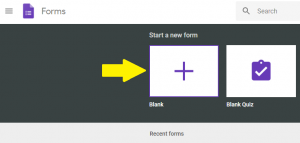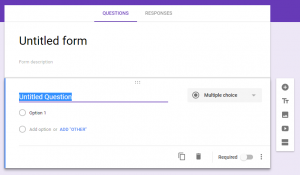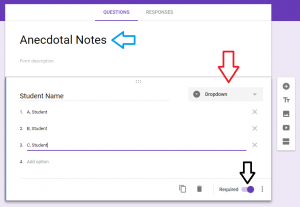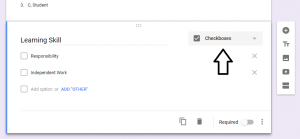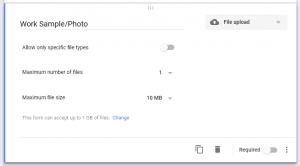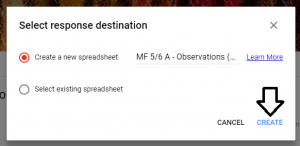Update, July 1 2019: I have added a new post with even more learning skills samples. 🙂 I’ve also posted some FSL comments for the Core and Immersion teachers out there.
One of the most difficult things I faced as a new teacher was having to write report cards. I struggled with trying to balance honesty with professionalism, giving detail without being overwhelming, and making everything “parent friendly” so they actually got a sense of how their child was doing in school. A few years in now, I feel like I’m starting to get the hang of this report card writing thing… so here I am to share a few sample comments (edited, of course) for anyone who would find them helpful. These comments are from several different years and several different student profiles. Looking back on them now, I feel oddly self-conscious about these… I feel like there is still so much more I can do to improve my reporting skills.
Here, in no particular order, are six different learning skills comment samples. Enjoy!
– – – – –
It has been a pleasure to teach (name) this term. She arrives at school each day with a positive attitude, bright smile, and determination to do her best no matter what the task. She is an active participant in both whole class and small group discussions, eagerly offering her ideas and insights.
During independent work periods, (name) can always be counted on to stay on-task. Her work is always completed on time and with considerable detail. She checks in with her teachers regularly while working to ensure that she is on the right track and readily asks for clarification when necessary.
When collaborating with peers, (name) easily takes on leadership roles to help guide her group to success. She engages her peers in the task and tries to encourage everyone to contribute. On the rare occasion that conflict arises, she is generally able to work with her peers to resolve the issue without needing assistance.
Overall, (name) has been very successful this year. She has been a positive role model for her classmates. Have a wonderful summer, (name)!
– – – – –
It has been a pleasure to teach (name) this year. He arrives at school each day with a positive attitude and a smile, willing to take risks and always do his best. He is generally an active participant in both whole class and small group discussions, eagerly offering his ideas and insights. While he is following along with lessons, however, (name) has needed frequent reminders to put books away while teachers or peers are speaking. Going forward, he is encouraged to find appropriate times to read so that he is listening actively at all times.
During independent work periods, (name) has some difficulty staying on task and completing his work on time. His success depends greatly on which peers he is seated with, becoming easily distracted by chatty students. When focused on his work, he has a tendency to spend too much time in the planning stage, resulting in having to rush to finish his work at the last minute. Next year, he would benefit from working with his teachers to continue developing time management strategies.
When collaborating with peers, (name) easily takes on leadership roles to help guide his group to success. He engages his peers in the task and tries to encourage everyone to contribute. On the rare occasion that conflict arises, he is generally able to work with his peers to resolve the issue without needing assistance.
Overall, (name) has had a great year. Best of luck in Grade _, (name), and have a wonderful summer!
– – – – –
(NAME) is a hard-working, enthusiastic student with a keen sense of humour. He readily participates in class discussions, offering his ideas and perspectives with confidence. He can always be counted on to complete his work on time, as he consistently checks in to make sure that he has submitted all required work. He has begun to double-check assignment requirements while working on them, which is helping him to ensure he has all the necessary elements before submitting his work.
During independent work periods, (NAME) generally remains on-task, but can occasionally be distracted by students around him. A verbal reminder to return to the task at hand is usually enough to get him back on track. Going forward, he is encouraged to recognize when he is becoming distracted and independently seek out solutions, such as another workspace or asking his peers to be quieter, to help him stay focused.
(NAME) can always be counted on to try and make all students feel welcome and appreciated in the classroom. He is quick to encourage students in their efforts, offering them a reassuring comment to help set them at ease. His kind nature and caring attitude have helped him immensely in the classroom, as he can work with any student without issue.
At times, (NAME) can seem easily discouraged by other students correcting him or commenting on his work. He should take pride in what he has accomplished so far this year, as he has made immense progress. He is encouraged to continue developing confidence in his abilities in the French Immersion program, as his efforts and determination have not gone unnoticed. Keep up the great work!
– – – – –
It has been a pleasure to teach (name) this year. His compassion and witty sense of humour have been welcome additions to the classroom community over the course of the year. He is eager to participate in class discussions and offer his insights and experiences in all subject areas. At times, however, he plays with small items at his desk or taps his hands in a way that is distracting both to teachers and to his peers. He is encouraged to try to avoid these behaviours in the future and to ask for a break if feels that he needs to move around.
(name) takes pride in a job well done and has a strong work ethic. He consistently hands in assignments on time and ensures that the work he submits is of a high standard. He has continued to ask whether he has any work outstanding in order to stay on top of deadlines, and this sense of initiative and responsibility will serve him well in the future.
In general, (name) collaborates well with his peers. He can be counted on to complete his share of the work with enthusiasm and detail. At times, he can become frustrated with his peers if they are distracted or not working, and this frustration can lead to him addressing his peers with a critical tone of voice. Going forward, (name) is encouraged to seek assistance from the teacher when he is frustrated with his group and to try and maintain a respectful tone with his peers at all times.
Overall, (name) has been working hard this year to improve his skills and take on more responsibility. He has strong interpersonal skills both with his peers and with adults. Great work, (name)!
– – – – –
It has been a pleasure to teach (name) this year. Her strong work ethic, compassion, and creativity have been welcome additions to our learning community. Throughout the year, she has consistently demonstrated an eagerness and dedication to learning in all areas. She consistently participates in class discussions, providing her opinions with confidence.
(name) approaches most tasks with a positive attitude. She is not easily discouraged by challenges and, when necessary, will seek clarification or assistance from her teachers. When completing projects, she habitually cross-references her work with the expectations (usually in rubric or checklist form) to ensure that her work is of high quality.
During independent work periods, (name) is always on task. She has a strong sense of time-management and consistently completes her work on time. She will benefit from taking more time to improve the overall neatness of her work as she heads into Grade 6.
(name) has made considerable progress in working with her peers to integrate their ideas with her own. She has been working hard to be more open-minded with others’ suggestions. When collaborating with peers, she has consistently taken on a leadership role in organizing what needs to be done and how the group will achieve their goal.
Overall, (name) has been working hard this year to improve her skills and take on more responsibility. She is encouraged to take on more of a leadership role in speaking French in the classroom in Grade 6.
– – – – –
(name) is a kind, compassionate student who has made significant progress over the course of the year. While he is reluctant to participate in class discussions, his writing and completed work demonstrate that he is actively listening. He is a strong student for the most part, generally aware of what the expectations are for a task. This term, he has come forward much more readily if he has a question about a task, and his work has benefited greatly.
This term, (name) has had difficulty remaining on task during independent work periods. He often has a book in his desk that he reads instead of working on his assignments. He requires several reminders in order to continue his work. Similarly, there have been many assignments this term which he has submitted late or incomplete. Some assignments have been lost, while others were never finished despite extensions to deadlines. Going forward, (name) will benefit tremendously from taking greater responsibility for completing his work without needing reminders. His agenda will help him in this regard, as he will be able to keep track of deadlines and project status.
Collaboration has been a challenge for (name) this term. During group and partner work, his peers have often become frustrated with him for not taking on his share of the work. In many cases, he has required reminders from the teacher in order to complete his fair share of the work. For next year, he is encouraged to make a stronger effort to participate fully in collaborative tasks, as he has many interesting insights to offer.
Overall, (name)’s confidence at school has improved significantly this term. He is a strong, capable student when he is motivated, and he will accomplish great things in Grade 6 if he continues to improve his work habits!
– – – – –
Hopefully some of those comments help someone out there as we venture into yet another round of report card writing. I have always found it helpful to look at my colleagues’ comments to find new ways to word things, new formats to try, etc. A big part of teaching is learning from each other, and that’s why I thought sharing some of my comments from previous years would be beneficial to someone out there.
Good luck, and remember to take care of YOU as we wind down from the year.

